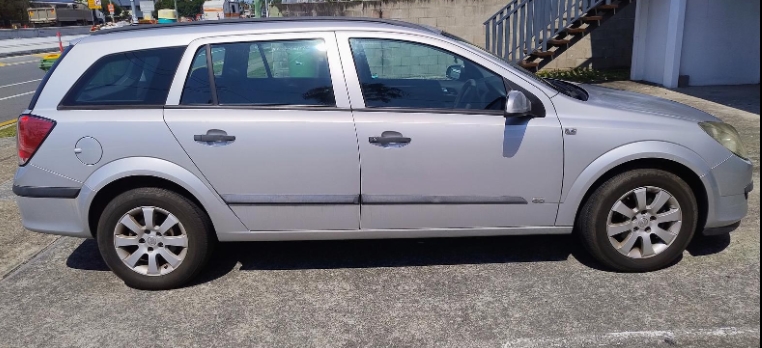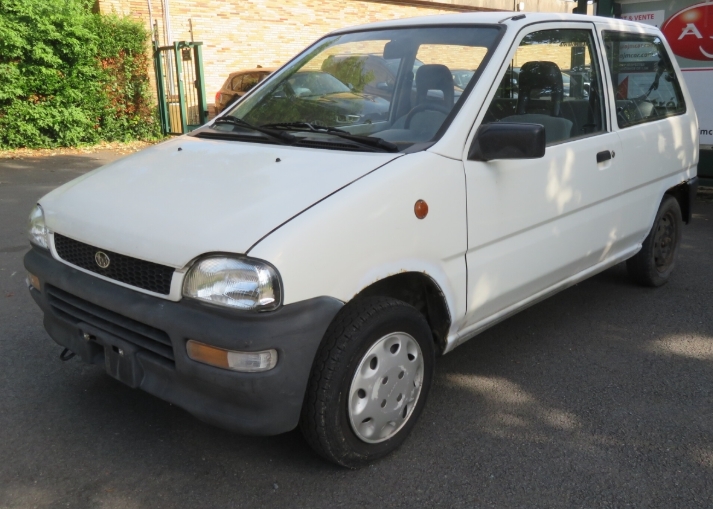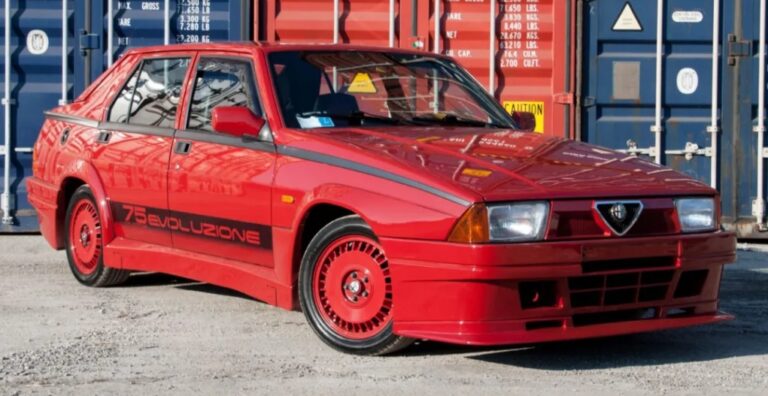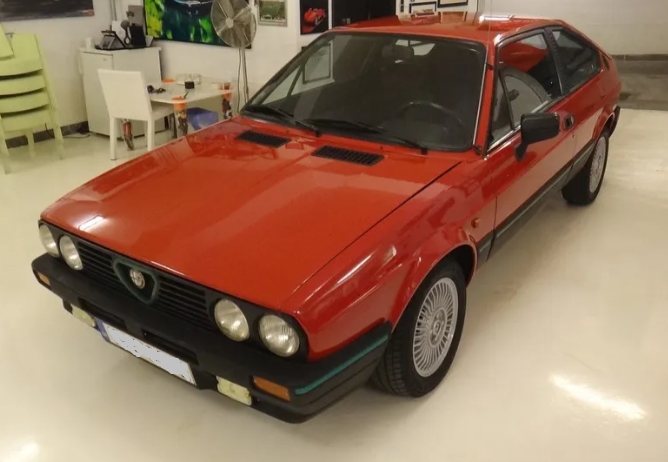The Evolution of The Holden Astra
Of the many nameplates that have graced Australian roads under the Holden banner, few tell a more complex, international, and ultimately poignant story than the Astra. For over three decades, it was Holden’s ever-present contender in the small car battlefield, a chameleon that changed its national identity multiple times, shifting from a Japanese stand-in to a European thoroughbred. It was built locally, imported, celebrated as a performance hero, and ultimately became a casualty of global automotive politics and the sad demise of Holden itself. This is the evolution of the Holden Astra, a journey through badge-engineering, golden eras, and a turbulent finale.
The Japanese Origins: The Button Plan Era (1984-1989)
The Astra story begins not in Europe, but in Japan, as a product of the Australian government’s “Button Car Plan.” This policy encouraged local manufacturers to share models to improve efficiency. Holden, needing a modern front-wheel-drive small car to replace the ageing Gemini, entered a joint venture with Nissan Australia. The result was the 1984 LB Holden Astra, a rebadged Nissan Pulsar N12.
LB Astra (1984-1986)
Models: Offered exclusively as a five-door hatchback.
Trim Levels:
SL: The base model, featuring a 1.5-litre carbureted engine paired with a 5-speed manual or 3-speed automatic.
SL/X: The mid-range offering, adding features like a tachometer, intermittent wipers, and plusher interior trim.
SL/E: The range-topper, distinguished by alloy wheels, two-tone paint, and more comprehensive standard equipment.
The LB Astra was a competent, if unexciting, vehicle that fulfilled its brief. In 1987, it was replaced by the LC Astra, based on the newer Nissan Pulsar N13 platform. This generation expanded the range significantly, adding a sedan to the lineup and introducing fuel injection.
LC Astra (1987-1989)
Models: Five-door hatchback and four-door sedan.
Trim Levels:
SL: The entry point, now with a more powerful 1.6-litre engine.
SL/X: The volume seller, which received a larger 1.8-litre single-point fuel-injected engine, offering a notable performance boost.
SLE: The luxury-focused model, also using the 1.8-litre engine.
SV1800: A short-lived, sporty three-door hatchback with unique body styling and the 1.8-litre engine, aiming to capture the emerging “hot hatch” market.
The partnership with Nissan dissolved in 1989. Holden formed a new alliance with Toyota (UAAI), and the Astra nameplate was retired, replaced by the Toyota Corolla-based Holden Nova. For a time, it seemed the Astra’s chapter in Australia was over.
The European Renaissance: A Return with Opel (1995-1998)
After a six-year hiatus, the Astra nameplate made a triumphant return to Holden showrooms in 1995. This time, its origins were entirely different. With the UAAI venture winding down, Holden looked to its General Motors parent company in Europe and began importing the TR Astra, a rebadged version of the German-engineered Opel Astra F. Initially sourced from the UK (Vauxhall), this model marked a fundamental shift in the Astra’s identity, positioning it as a more premium, European-feeling small car.
TR Astra (1995-1998)
Models: Three-door hatchback, five-door hatchback, four-door sedan, and five-door wagon.
Trim Levels:
City: The budget-conscious base model, equipped with a 1.6-litre engine.
GL: The mid-spec model, offering a more powerful 1.8-litre engine and better features like power steering and central locking.
GSi: The performance variant. Offered only as a three-door hatch, it boasted a potent 2.0-litre 16-valve engine, sports suspension, a body kit, and Recaro seats, making it a cult favourite.
The TR Astra successfully re-established the name, praised for its solid build quality and refined driving dynamics compared to its Japanese rivals. It was the perfect foundation for what would become the Astra’s golden age in Australia.
The Golden Age: Local Hero (1998-2006)
The launch of the TS Astra in 1998 was a landmark moment. Based on the all-new Opel Astra G, this generation was not only a critical and commercial success but was also, from late 1998, locally assembled at Holden’s Elizabeth plant in South Australia. This connection to local manufacturing cemented its place in the hearts of Australian buyers. The TS Astra was stylish, well-equipped, and offered the widest variety of body styles and engines in its history.
TS Astra (1998-2005; continued as Astra Classic until 2006)
Models: Three-door hatchback, five-door hatchback, four-door sedan, five-door wagon, and a stunning two-door convertible designed and built by Bertone in Italy.
Trim Levels:
City: The entry model, initially with a 1.8-litre engine.
CD: The mainstream choice, adding alloy wheels, power windows, and cruise control.
CDX: The luxury variant (often on sedan and hatch), with leather trim, climate control, and larger alloy wheels.
SXi: A sporty three-door hatch with the 1.8-litre engine, sports trim, and firmer suspension.
SRi: A “warm hatch” available as a three-door, powered by a lively 2.2-litre engine.
SRi Turbo / Turbo: Introduced later in the model’s life, this was the hero car. Powered by a 2.0-litre turbocharged engine, it was a genuine performance threat, available in both three-door hatch and convertible form.
Equipe: A common special edition, typically based on the CD, adding extra features for a value price point.
The TS was so popular that when its successor arrived in 2004, Holden continued to sell the TS sedan and wagon as the “Astra Classic” until 2006, serving the budget-conscious end of the market.
The Peak of Sophistication: The Fully Imported Era (2004-2009)
The AH Astra, launched in late 2004, represented another step upmarket. Based on the Opel Astra H, local assembly ceased, and the entire range was once again fully imported from Europe (primarily Belgium and Poland). The AH was visually striking, particularly the three-door “Sport Hatch,” and featured a high-quality interior and advanced technology for its time.
AH Astra (2004-2009)
Models: Three-door “Sport Hatch,” five-door hatchback, five-door wagon, and the folding-metal-roof “TwinTop” convertible. Notably, a sedan was absent from this generation.
Trim Levels:
CD: The new base model, powered by a 1.8-litre Ecotec engine.
CDX: The mid-range model, adding larger alloys, climate control, and fog lights.
CDXi: A higher-spec luxury model with leather seats and premium features.
SRi: The sporty model, powered by a 2.2-litre direct-injection petrol engine or a potent 2.0-litre turbo.
SRi Turbo: The dedicated 2.0-litre turbo performance model below the flagship.
VXR: The ultimate performance halo. Wearing the UK’s Vauxhall Racing badge, the VXR was a hardcore hot hatch with a high-output 2.0-litre turbo engine, aggressive styling, and track-focused suspension.
Despite its critical acclaim, GM’s global strategy shifted. The Daewoo-sourced, locally-tuned Holden Cruze was chosen as GM’s global small car, and in 2009, the Astra was once again removed from the lineup to make way for it.
The Confusing Interlude and Brief Return (2015-2016)
The story took a strange turn in 2012 when GM launched Opel as a standalone brand in Australia, with the new-generation Astra J as its hero product. The venture failed within a year due to high pricing. However, Holden saw an opportunity. With the Cruze lineup lacking a true performance dimension, it cherry-picked the sporty three-door models from the Astra J range and reintroduced them as Holdens in 2015.
Astra GTC & VXR (2015-2016)
Models: Three-door hatchback only.
Trim Levels:
GTC: The “warm” version, with a 1.6-litre turbocharged engine.
GTC Sport: A higher-spec version of the GTC.
VXR: The full-blooded hot hatch, now with a more advanced chassis and a powerful 2.0-litre turbo engine.
This was a short-term, niche offering to bridge the gap until a full-line replacement for the Cruze was ready.
The Final Chapter: A Brilliant Car at the Wrong Time (2016-2020)
In late 2016, the Astra made its final, full-scale comeback. The BK Astra, based on the Opel Astra K, was a superb vehicle. It won the prestigious 2016 European Car of the Year award and was lauded for its lightweight chassis, efficient turbocharged engines, and advanced technology. Hopes were high that this would finally be the car to beat the Toyota Corolla and Mazda 3.
However, the lineup was complicated. The hatchback and wagon (“Sportwagon”) were sourced from Europe, while the sedan was a completely different car—a rebadged second-generation Chevrolet Cruze from South Korea.
BK Astra Hatch & Sportwagon (2016-2019)
Trim Levels (Hatch):
R: The entry model with a 1.4-litre turbo engine.
RS: The sporty mid-range with a more powerful 1.6-litre turbo and superior independent rear suspension.
RS-V: The luxury/sport flagship, building on the RS with more tech and comfort features.
Trim Levels (Sportwagon):
LS+
LT
BK Astra Sedan (2017-2019)
Trim Levels:
LS
LS+
LT
LTZ
The BK Astra was, by all accounts, one of the best cars in its class. But external forces conspired against it. In 2017, General Motors sold Opel and Vauxhall to the PSA Group (Peugeot-Citroën). This immediately complicated the long-term supply of the European-built Astra for Holden. Compounding this was Holden’s own declining market share following the end of local manufacturing.
.
Many car aficionados have multiple hobbies, like boating as well as auto stuff. Those who don’t already own a boat (and even some that do), may have thought about building their own boats. It’s really not as hard as you’d think. Just take a look at these easy boat building plans!

.
Sales slowed, and Holden simplified the range, discontinuing the sedan and wagon. But the writing was on the wall. On February 17, 2020, General Motors announced the “retirement” of the Holden brand entirely. With that announcement, the long, varied, and fascinating journey of the Holden Astra in Australia came to an abrupt and final end.
From a rebadged Nissan to a locally-built hero and a world-class European import, the Holden Astra mirrored the fortunes of the company that sold it. It was a nameplate that represented Holden’s ambition, its global connections, and ultimately, its vulnerability, leaving behind a legacy as one of the most significant and well-regarded small cars in Australian automotive history.







